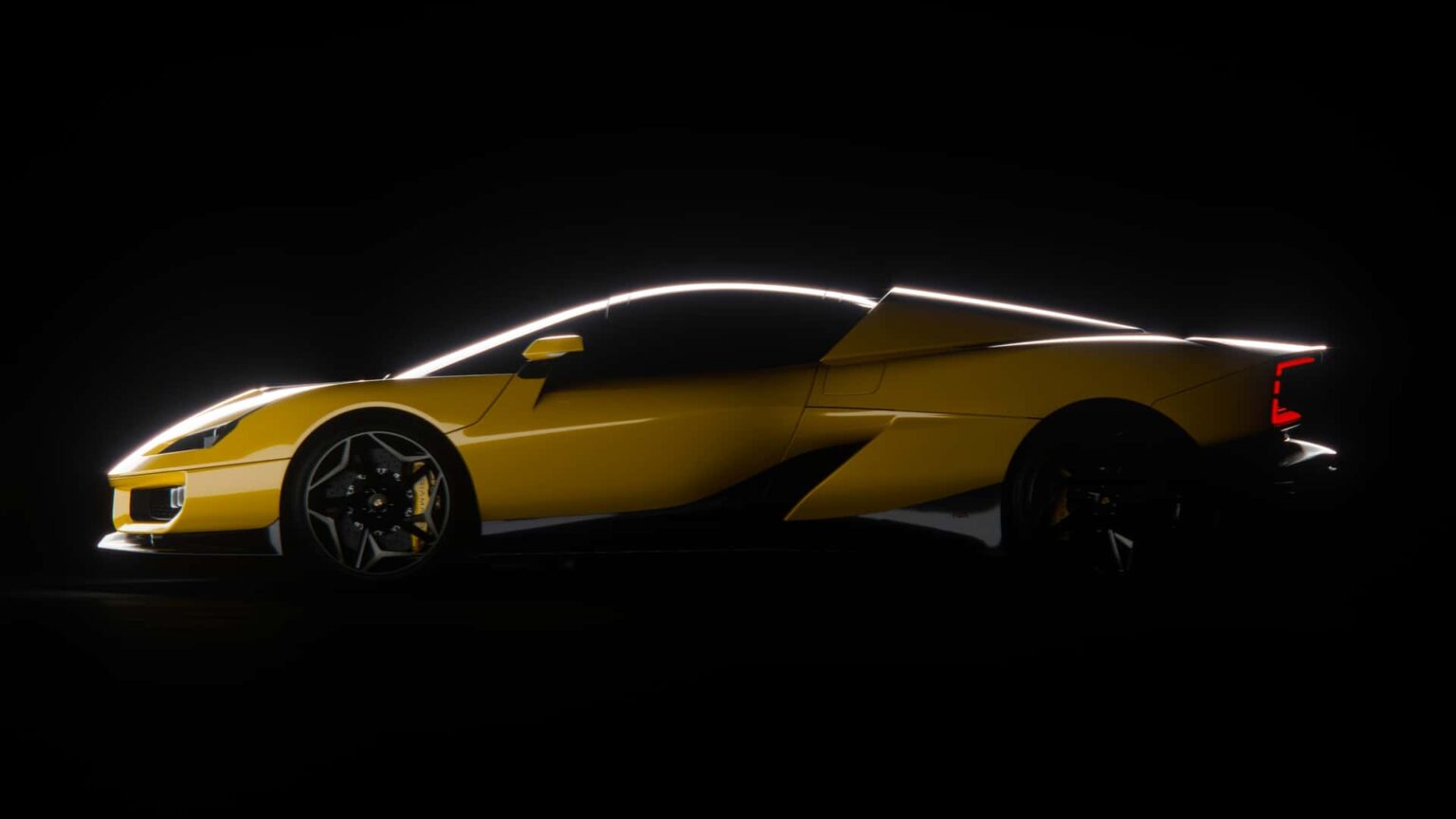The R&D center of Giamaro Automobili smells like drying paint. In the small Emilia-Romagna town of Cavezzo, Italy, a half-hour from Modena, workers are busily preparing this former medical-supplies factory for the launch of the Katla, the first hypercar from a brand-new challenger to the Italian establishment. They’re a week out, yet kindly opened the doors for Motor1 to see what they’re up to.
What they’re up to is remarkable. A brand-new hypercar, with one of the craziest engines we’ve ever seen: A quad-turbocharged 7.0-liter V-12 capable of 2,128 horsepower and 1,481 pound-feet of torque. In a car with a seven-speed manual gearbox and only two driven wheels.
Photo by: Giamaro Automobili
On paper, it seems like it shouldn’t be real. But in one room of Giamaro’s facility, workers are prepping a yellow production-representative prototype that’ll star in the reveal event, and in another, engineers fire up a naked Katla and drive it around the parking lot.
Giamaro is the product of the Commendatore family. Father Giacomo runs a successful mattress business and is a prominent car collector. He was also one of the original backers of Pagani, helping make the Zonda a reality. His son Pierfranceso is an enthusiast, too, and he’s running the day-to-day operations of the company.
“We tried to give our car, our product, a specific identity, and create a deep connection between driver and machine, something that doesn’t exist yet,” Giacomo says through an interpreter.
“We insisted a lot on this aspect because emotion is the key of it all,” adds Pierfranceso.
Photo by: Chris Perkins / Motor1
Photo by: Chris Perkins / Motor1
Photo by: Chris Perkins / Motor1
Heading up engineering is a supercar legend, Loris Bicocchi, who started his career at Lamborghini in the 1970s, joined the revived Italian-owned Bugatti in the 1990s, and went on to work as a hired gun for Pagani, Koenigsegg, Dallara, and once again, Bugatti.
Bicocchi’s credits include the Countach, Diablo, EB110, Zonda, CCX, Veyron, and Chiron. At the R&D center during my visit, he’s in the trenches with other engineers, prepping the mule car to test the optional seven-speed dual-clutch.
Photo by: Chris Perkins / Motor1
‘We tried to give our car, our product, a specific identity, and create a deep connection between driver and machine, something that doesn’t exist yet.’
Giamaro is headquartered right in Italy’s famous Motor Valley, home to Ferrari, Lamborghini, Maserati, Pagani, and Ducati. There’s a wealth of talent to draw on, like Bicocchi, and suppliers to turn the Commendatores’ dreams into reality. It’s planning on building its first vehicles at the Cavezzo R&D center, but it also purchased a plot of land in Castlefranco Emilia—which sits about halfway between Modena and Bologna—for a larger, more permanent factory.
The Katla is based around a carbon-fiber monocoque which, somewhat unusually, doesn’t use a separate rear subframe for the suspension. Sizewise, it’s longer, lower, and wider than a C8 Corvette Z06, and Giamaro claims a weight of just 3,200 pounds.
The suspension is beautiful, CNC-milled aluminum double wishbones all around and inboard coil springs with adaptive dampers. Giamaro also employs a heave spring, which further helps control vertical body motion. It’s actually an electronically adjustable heave spring, which we’ve never seen before in a road car.
Photo by: Chris Perkins / Motor1
Photo by: Chris Perkins / Motor1
Giamaro has some serious partners lined up. One of the most important is Bridgestone, which the company is working with to develop a bespoke set of Potenza Sport tires measuring 265/35ZR20 front and 345/30ZR21 rear.
Still, it’s the engine that’s the highlight here. Giamaro developed it in tandem with engineering firm Italtecnica, which it owns a stake in. The Turin shop is best known for making engines for a variety of restomod cars, like the Kimero EVO37 and Nardone Automotives’ reinterpretation of the Porsche 928. It uses gear-driven camshafts and a hot-vee arrangement, with four turbos arranged within the 120-degree valley of the vee. This hot-vee setup helps with throttle response, as does the fact that each turbo works on just three cylinders of the V-12.
Photo by: Chris Perkins / Motor1
The Katla will have three keys, each corresponding to a different power level. The white key is a sort of valet key, limiting power to between 394 and 789 horsepower; the black key is for daily use, limiting power to just 1,647 horsepower; the red key unlocks the full potential.
Color and trim personalization is big in supercars/hypercars today, but Giamaro wants to offer an even deeper level of customization. The customer will work with Bicocchi and his team to define exactly how their Katla drives.
Photo by: Chris Perkins / Motor1
“Every single detail of the car is completely personalizable and adjustable,” Giacomo says. “So if you want a car that feels like a Ferrari, then slightly changes and gets to the feeling of a Porsche and then of a Bugatti, we can make it happen because every single component allows us to adjust suspensions, the dampers, the balance, the steering. And with the [heave spring], it enables us to have pretty much infinite regulations of the setup.”
We don’t know pricing, but Giamaro has deposits for the first year of production, plans to build 30 cars per year, and more products in the pipeline. Naturally, there’s an open-top version of the Katla, and more intriguingly, the Albor, a high-riding, rear-drive two-door coupe. And the product plan extends into the 2030s.
46
Source: Giamaro Automobili
Read the full article here


